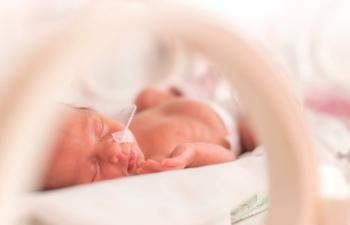
Impact of surgical technique on treatment failure after prolapse surgery
A new randomized trial compared the failure rates of vaginal mesh against hysterectomy with uterosacral ligament suspension for prolapse surgery.
A new randomized
Published in
The authors aimed to determine whether treatment failure was different for vaginal mesh hysteropexy or vaginal hysterectomy in the women. Failure was based on a composite of retreatment of prolapse, prolapse beyond the hymen, or prolapse symptoms. Secondary outcomes included operative outcomes and adverse events (AEs), which were evaluated with longitudinal models or contingency tables.
Of the 175 women randomized-all of whom were blinded to procedure-88 underwent vaginal mesh hysteropexy and 87 underwent vaginal hysterectomy. After 3-year follow-up, which was completed by 169 of the participants, the authors found that the rate of composite prolapse was not significantly lower in the group that had undergone the mesh procedure. The 36-month adjusted failure incidence was 26% for hysteropexy versus 38% for hysterectomy; adjusted hazard ratio 0.62 (95% CI 0.38-1.02; P = .06). Operative time was shorter in the hysteropexy group (11.5 minutes vs. 43.9 minutes; difference, -45.2 [95% CI, -57.7 to -32.7] P <.001).
AEs in the hysteropexy vs. hysterectomy groups included mesh exposure (8% vs 0%), ureteral kinking managed intraoperatively (0% vs 7%), granulation tissue after 12 weeks (1% vs 11%), and suture exposure after 12 weeks (3% vs 21%). The authors noted that at 3 years, the majority of women in both groups (90% hysteropexy, 89% hysterectomy) reported “much better” or “very much better” improvement on the Patient Global Impression of Improvement (risk difference, 0.00 [95% CI, -0.09 to 0.10]; P = .93). Only the hysterectomy group experienced ureteral “kinking” (7%) and midurethral sling mesh exposure (6%). The rate of mesh exposure in the hysteropexy group was 8%. No reoperations were required for mesh exposures, granulation tissue, or suture exposures.
The authors said their trial “provides new information for failure rate ascertainment” while acknowledging that “the remaining uncertainty is too great to either establish benefit or to rule out the originally hypothesized magnitude of treatment effect.” The women in the study are being followed up for 60 months and the researchers believe that with that extended follow-up, their results and conclusions could change.
Newsletter
Get the latest clinical updates, case studies, and expert commentary in obstetric and gynecologic care. Sign up now to stay informed.









